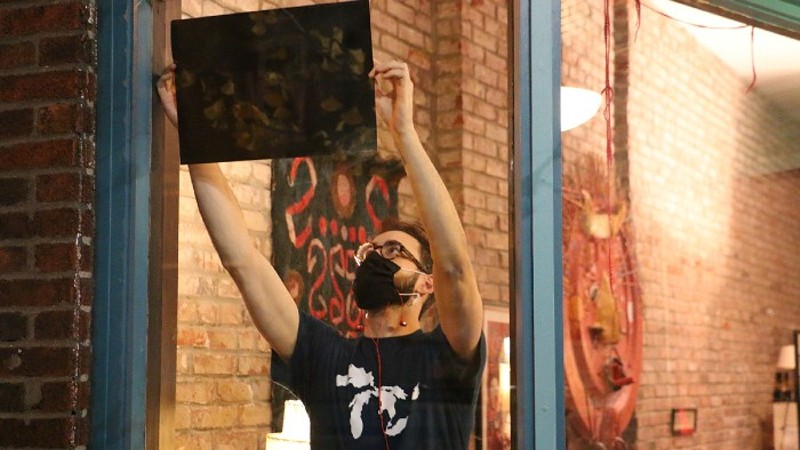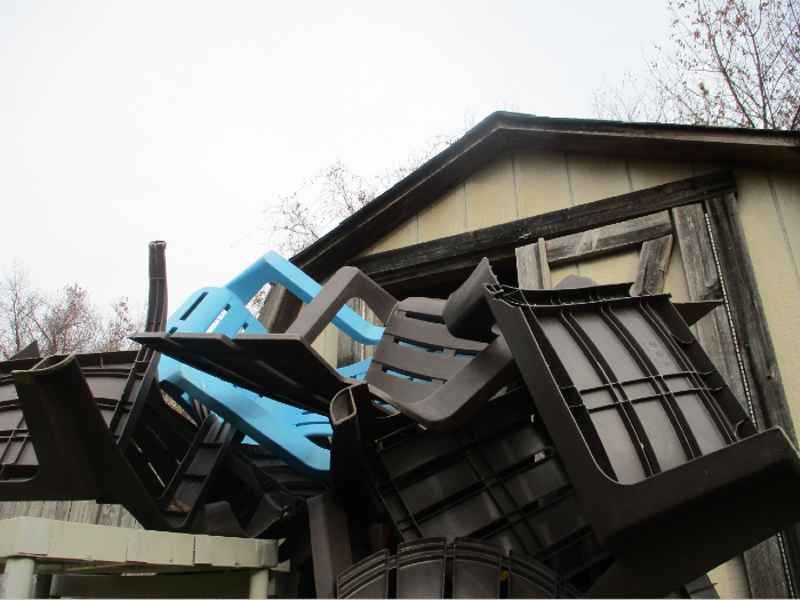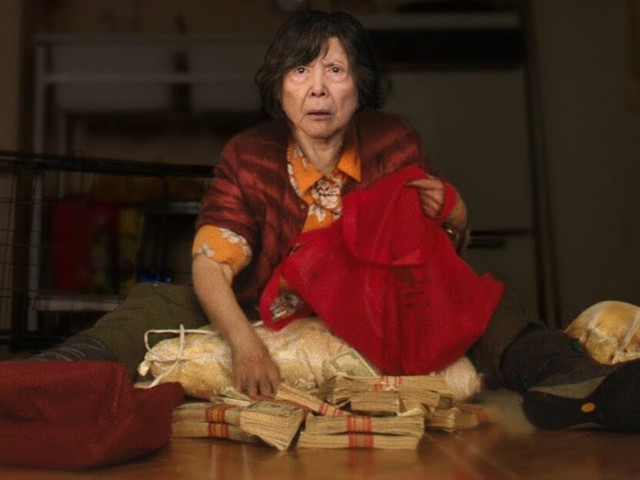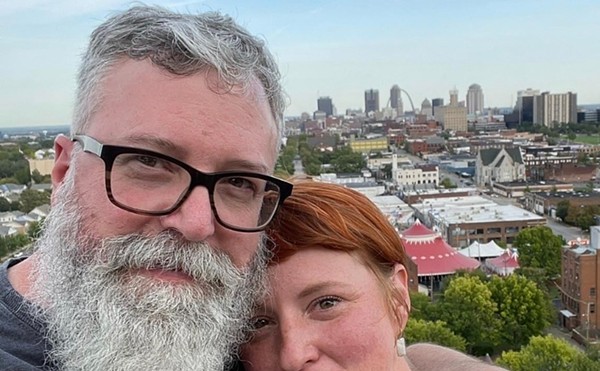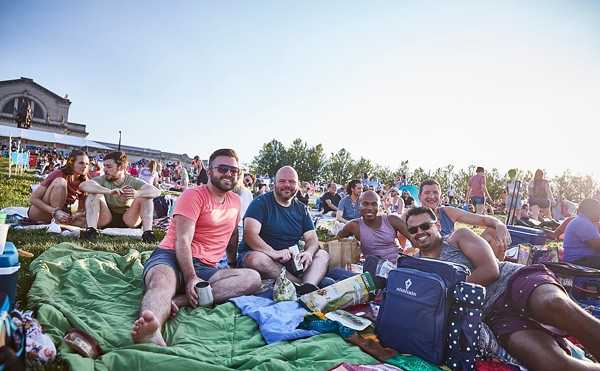A park bench, the sun cloaked in gray clouds and plastic outdoor chairs stacked up in a pile are some of the subjects of the twelve photographs on display in the windows of Red Chair on Cherokee (2319 Cherokee Street).
Reading the text below each print reveals the reason these shots of simple objects are exhibited on the gallery storefront – documenting the everyday life of people suffering from post-traumatic stress disorder.
One photo features an open refrigerator. This particular refrigerator is exhibited in the gallery because, simply put, there’s no alcohol in it. The photographer is so accustomed to seeing the alcohol that even a year after his recovery, he is still surprised to see his fridge without it.
The photographs were taken by patients at Places for People, a facility on Lindell Boulevard that specializes in providing mental health care for lower income communities, particularly those who are homeless, uninsured or underinsured.
The project, “Standing in the balance: A photovoice exhibit on coping with traumatic stress and substance use,” is free and available for viewing now through November 28 at Red Chair.
Places for People provides community members who typically could not afford it with mental health care, which benefits them in more ways than expected. Higher rates of homelessness, criminal activity and food insecurity are among the more serious consequences of a person suffering from an untreated mental health issue.
The facility on Lindell attempts to stop the cycle. They provide the most vulnerable community members with the resources to address a myriad of problems – one particular way being through the new photo exhibit.
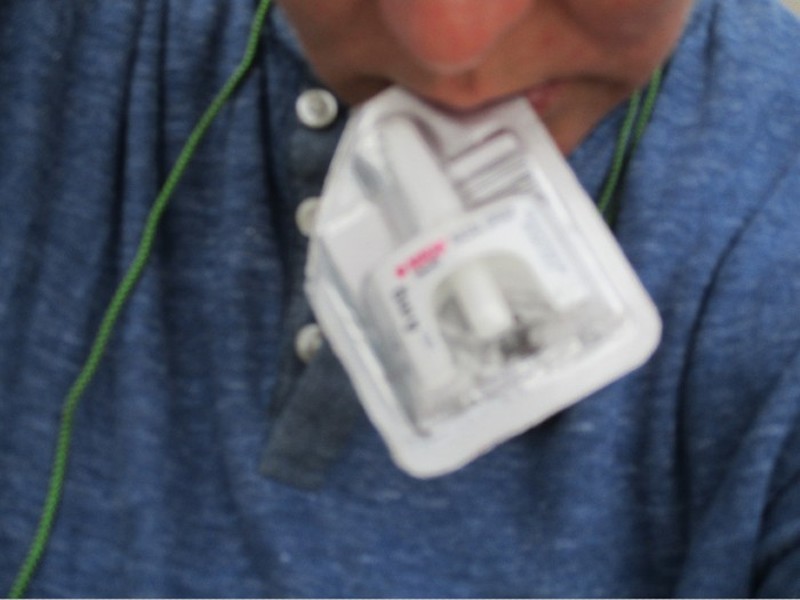
COURTESY PLACES FOR PEOPLE
An image of a person with Narcan nasal spray, one of the photos in the show.
The exhibit was incepted by Kyle Brandt-Lubart, therapist and coordinator of the community arts program, and Nathan Dell, director of research and evaluation at Places for People. Both of their skillsets, Brandt-Lubart’s artistic abilities with Dell’s logistical, research-driven mindset, came into play for the project. They worked with Dr. Brandy Maynard, associate professor in the Saint Louis University School of Social Work to bring it all together.
For them, the need to highlight daily struggles with PTSD was there.
“Almost everyone will experience a potentially traumatic event. And even though a very small portion of people develop PTSD, it’s something that is pretty common and connected,” Dell says. “It could feel difficult to know how to respond to that stress in other people, so here’s an opportunity to learn how people cope successfully with this type of stress.”
Through Dell’s studies about the trauma of substance abuse, he was inspired to look into creative ways to evaluate coping mechanisms. He came upon one idea that was unique to their typical research practices – utilizing photovoice. Instead of using verbal responses to explain the recovery process, Places for People staff believes they might receive more insight from their patients if they worked through visuals. Dell says that through the process of taking photos to express their emotions and coping mechanisms, they might be able to create more critical consciousness about their own healing process.
The photovoice exhibit was described to the patients in an hour and half presentation last fall. The organizers specifically explained it would be used as a form of research, but over the last year since its inception, the project has become a version of therapy for the participants.
At the presentation, the six participants were given cameras to document their daily reality on the road to recovery, courtesy of Saint Louis University Doerr Center for Social Justice fund. Some patients took the assignment more literally, highlighting scenes and objects that were readily accessible to them in their healing process, while others thought about it in the abstract, featuring more representational items that they felt symbolized feelings of safety and comfort in their lives.
Some participants wanted to be involved in the entirety of the project, up until the moment the photos were hung last week, underscoring the participatory aspect of the project.
Brandt-Lubart believes that the project is a creative and physical way to focus our dialogue around mental health, all in hopes of dismantling the stigma around it.
“It’s so easy to cast judgment, it makes it much harder to do that when you are physically, tangibly sharing space with people who are just being beautifully vulnerable,” she says.
Brandt-Lubart hopes the exhibit provides a “humanizing depiction of day-to-day life” for its visitors.
While the original exhibit was supposed to take place last spring, COVID-19 shutdowns had other plans in mind. Still, Places for People lived up to their namesake and did not close their doors to the community that needed them most.
“The name is Places for People and we have to have a place for people within our institution,” Dell says. “As a health care facility, we don’t have an option of closing down. We’ve just had to reconfigure the way in which we can connect with people.”
Navigating the project through a pandemic has not been the easiest task, the two agreed. With over a year put into the exhibit, the twelve photographs currently on display feel like a long time in the making.
To make the exhibit more socially distant, the team decided against a typical gallery exhibit. The photos are available for viewing on the storefront’s windows, providing a safe way to view the project and to hopefully gain some viewers from passersby.
Ultimately, Brandt-Lubart and Dell believe the photovoice exhibit is worthy of an audience.
“I think if people are curious about how people overcome significant distress, if they’re willing to learn from people who have been through it, then they should take a look at the photographs, see the quotes and see how people make sense of their experience in the face of adversity,” says Dell.
On top of this, “It offers a safe way to experience something together,” Brandt-Lubart adds.
“I just get incredibly excited when folks who have immense talent and insight, like our participants, get to be featured in a gallery setting that honors that insight, experience, and talent – that’s something I feel passionate about,” she explains.
Dell describes their patients as resilient. However, he explains, they’re resilient because they must be – their conditions simply require it. Places for People and the photovoice exhibit allow them the opportunity to be vulnerable instead of strong in the face of challenges, maybe for the first time in their lives.
To be able to head a project that provides this opportunity, Dell says, “feels life-giving.”

